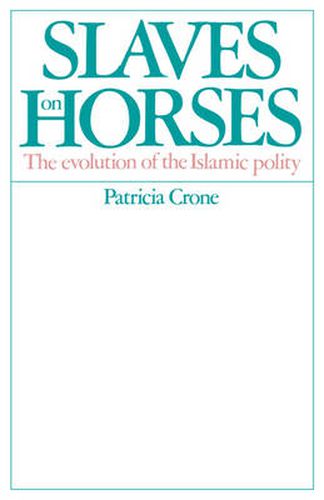Readings Newsletter
Become a Readings Member to make your shopping experience even easier.
Sign in or sign up for free!
You’re not far away from qualifying for FREE standard shipping within Australia
You’ve qualified for FREE standard shipping within Australia
The cart is loading…






Slave soldiers are a distinctively Muslim phenomenon. Though virtually unknown in the non-Muslim world, they have been a constant and pervasive feature of the Muslim Middle East from the ninth century AD into modern times. Why did Muslim rulers choose to place military and political power in the hands of imported slaves? It is this question which Dr Crone seeks to answer. Concentrating on the period from the rise of the Umayyads to the dissolution of the ‘Abbasid empire (roughly AD 650-850), she documents the consequences of the fusion between religion and politics in Islam, which she sees as an essential forging characteristic of the Muslim social structure and state. Primarily addressed to specialists and advanced students of Arabic and Islamic history, the book will also appeal to comparative historians and social anthropologists.
$9.00 standard shipping within Australia
FREE standard shipping within Australia for orders over $100.00
Express & International shipping calculated at checkout
Slave soldiers are a distinctively Muslim phenomenon. Though virtually unknown in the non-Muslim world, they have been a constant and pervasive feature of the Muslim Middle East from the ninth century AD into modern times. Why did Muslim rulers choose to place military and political power in the hands of imported slaves? It is this question which Dr Crone seeks to answer. Concentrating on the period from the rise of the Umayyads to the dissolution of the ‘Abbasid empire (roughly AD 650-850), she documents the consequences of the fusion between religion and politics in Islam, which she sees as an essential forging characteristic of the Muslim social structure and state. Primarily addressed to specialists and advanced students of Arabic and Islamic history, the book will also appeal to comparative historians and social anthropologists.